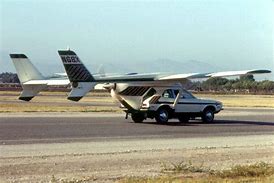My first car was a used 1971 Volvo 142 and probably did not contain more than a handful of transistors. I used to joke that it could easily survive the EMP from a nuclear explosion. Now, of course, cars contain dozens or more processors, DSP’s and other chips containing millions of transistors. It’s widely expected that the number … Read More
Clock Domain Crossing in FPGA
Clock Domain Crossing (CDC) is a common occurrence in a multiple clock design. In the FPGA space, the number of interacting asynchronous clock domains has increased dramatically. It is normal to have not hundreds, but over a thousand clock domains interactions. Let’s assess why CDC is a lingering issue, what its impact and the … Read More
Don’t Stand Between The Anonymous Bug and Tape-Out (Part 1 of 2)
In the EDA space, nothing seems to be more fragmented in-term of solutions than in the Design Verification (DV) ecosystem. This was my apparent impression from attending the four panel sessions plus numerous paper presentations given during DVCon 2018 held in San Jose. Both key management and technical leads from DV users community… Read More
Processing Power Driving Practicality of Machine Learning
Despite their recent rise to prominence, the fundamentals of AI, specifically neural networks and deep learning, were established as far back as the late 50’s and early 60’s. The first neural network, the Perceptron, had a single layer and was good certain types of recognition. However, the Perceptron was unable to learn how to… Read More
Increased Processing Power Moves to Edge
Recently there has been a lot of buzz about 5G networks. Aside from the talk about it possibly being nationalized, 5G will be a lot different than its predecessors. Rather than a single data link in a predetermined band, 5G will consist of a web of connections all working together to support existing types of data traffic and many new… Read More
Adapting an embedded FPGA for Aerospace Applications
The IC industry is commonly divided into different market segments – consumer, mobile, industrial, commercial, medical, automotive, and aerospace. A key differentiation among these segments is the characterization and reliability qualification strategy for the fabrication process and design circuitry. For each segment,… Read More
Conflating ISO 26262 and DO-254
If you’re in the ASIC business, by now you should have a rough understanding of ISO 26262, the safety standard for automotive electronics. You may be less familiar with DO-254 which has somewhat similar intent for airborne electronics. Unless, that is, you design with FPGAs in which case your familiarity may be the other way around… Read More
Moving from FPGA’s to Embedded FPGA Fabric – How it’s Done
Buying IP is just a little bit more complicated than buying a pair of shoes. A lot of IP is configurable and requires attention to various design and configuration parameters. We live in an age where commercial soft IP is used pretty often in designs, so people have developed increasing comfort in the process that is required to achieve… Read More
Webinar: ISO 26262 and DO-254: Achieving Compliance to Both
It’s near-impossible to read anything today about electronic design for cars without running into the ISO 26262 standard. If you design airborne electronic hardware, you’re likely very familiar with the DO-254 standard. But what do you do if you want to design a product to serve both markets? It looks like aircraft makers are increasingly… Read More
The lofty rise of the lowly FPGA
FPGA programmable logic has served in many capacities since it was introduced back in the early 80’s. Recently, with designers looking for innovative ways to boost system performance, FPGA’s have moved front and center. This initiative has taken on new urgency with the slowing down of process node based performance gains. The… Read More












Jensen Huang Drops Donald Trump Truth Bomb on Joe Rogan Podcast